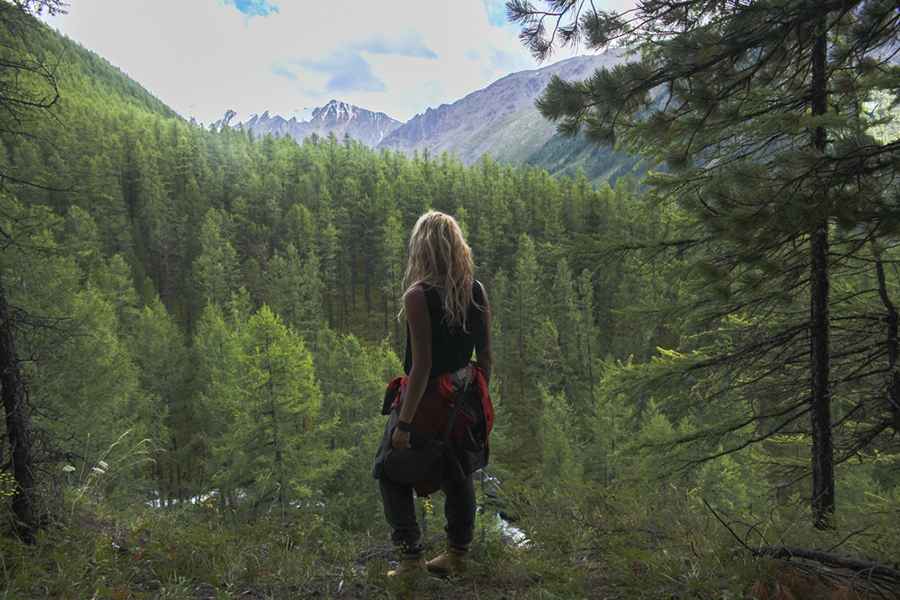How to Prepare for Safe National Park Hiking?
Driving to a national park with family or friends for a hike is a wonderful tour that can save time and build muscles, and you can also enjoy the natural scenery and release stress. Pictures related to hiking will make you think of many happy things, but don't forget that the wild is not like the city, where there are dangers everywhere.

Cases of disappearances in national parks
With more than 750 miles of trails, Yosemite National Park is a vast, unspoiled wilderness, making it a hiker’s dream. Here, since 1972, 13 people have disappeared and have never been seen again.
- Joel Thomazin, 31, of Denair in Stanislaus County was last seen on Sept. 6, 2021.
- Richard Judd, 69, was last seen hiking in the park on July 25, 2021.
- Sandra Johnsen Hughes, 54, has been missing in the Sierra National Forest since late June 2020.
- Peter Jackson, 74, went missing on Sept. 17, 2016, in Yosemite National Park.
- George Penca, 30, went missing on June 17, 2011, in Yosemite National Park.
- The youngest person reported missing by Yosemite National Park is Stacey Ann Arras, 14, went missing on July 17, 1981.
A happy trip should not end in sorrow. So, you should learn how to protect yourself in the wild. Even if you are an experienced hiker, don't get too confident that every trip will be smooth. This is not alarmist talk, life safety should always be the first priority.
Adopting the advice of a professional national park ranger is the most effective way to survive from a wilderness emergency. For a perfect hike, read these 5 professional tips.
Consult the park office and rangers
National or state parks have experienced rangers. These rangers gather factual information in wilderness parks all year round. They are familiar with the topography of the park and know where it is safe and where it is dangerous. Before setting off, call the park office to share your hiking plans and seek professional advice.
- Learn about the weather, fixed routes, rest stops and more.
- Mark your route and rest stops on a map. Calculate the time from start to rest stop for each section of the route to determine whether you need to prepare overnight equipment.
- Ask which routes are the safest and have beautiful views and natural water sources.
- Ask the staff what the rest stop can provide, and then add to your packing list what they can't provide.
- Ask advice on how to deal with dangerous flora and fauna, as well as self-rescue methods and essential tools.
Means of sending out a distress signal
If you encounter an emergency in the wild, on the one hand, you need to ensure your own safety first, and on the other hand, it is also important to send a distress signal to the outside. If no outside search and rescue personnel know where you are, you may not be able to return safely by yourself, or even disappear in the wild.
- Find the first aid phone number on the national park official website. It is best to write it down with paper and pen, not a mobile phone note.
- Before starting your hike, make sure your cell phone is fully charged and have a backup power source ready.
- Bring a satellite phone in case your mobile phone has no signal in the wild.
- Take prominent signals which can express help,such as: handheld flares, flare guns,flags, flash tape and sharpie marker, whistle.
Purchase the hiking essentials
The following is a well-prepared list of hiking must-haves. Buy them according to your actual travel plan. If you already have some gear, check to see if you need to update or add new gear.
1) Extra food
2) Drinking water purifier
3) Warm and waterproof clothes
4) Navigation and battery: map, altimeter, compass, GPS device, satellite communicator, or satellite phone, extra batteries or battery pack
5) Flashlight, lantern, or headlamp
6) Sun protection: sunglasses, sun-protective clothes, and sunscreen
7) First aid kit: alcohol pad, bandage, insect repellent, painkiller or more
8) Fire: matches, lighter, backpacking camping stove
9) Shelter: tent, tarp, bivy, raincoat
10) Repair kit
If you're looking through this list and find that you're missing a lot of gear, that means a big expense. You can choose outdoor brands, and it is best to buy enough equipment at one time in one store. When shopping online, search for the brand name by CouponBirds and you can get coupon codes. Enter a code on the checkout page to save money.
Ready to return at any time
Keep in mind that your primary goal is to hike on a safe basis. If you're tired, if your partner is injured, or if there is a big rainstorm, you should abandon the plan and turn back.
Focusing on your goals is not a bad thing. But if you're too persistent and ignore the actual situation, you're not only unable to get a comfortable trip, but also increase the risk of injury. Lower your expectations and you'll be more likely to feel satisfied.